Abstract
The absolute cyanide content of developing fruits was determined in Costa Rican wild lima beans (Phaseolus lunatus), oil flax (Linum usitatissimum), and bitter almonds (Prunus amygdalus). The cyanide potential (HCN-p) of the lima bean and the almond fruit began to increase shortly after anthesis and then stopped before fruit maturity. In contrast, the flax inflorescence had a higher HCN-p in absolute terms than the mature flax fruit. At all times of its development the bean fruit contained the monoglucosides linamarin and lotaustralin. The almond and the flax fruits contained, at anthesis, the monoglucosides prunasin, and linamarin and lotaustralin, respectively, while, at maturity, only the corresponding diglucosides amygdalin, and linustatin and neolinustatin, respectively, were present.
Full text
PDF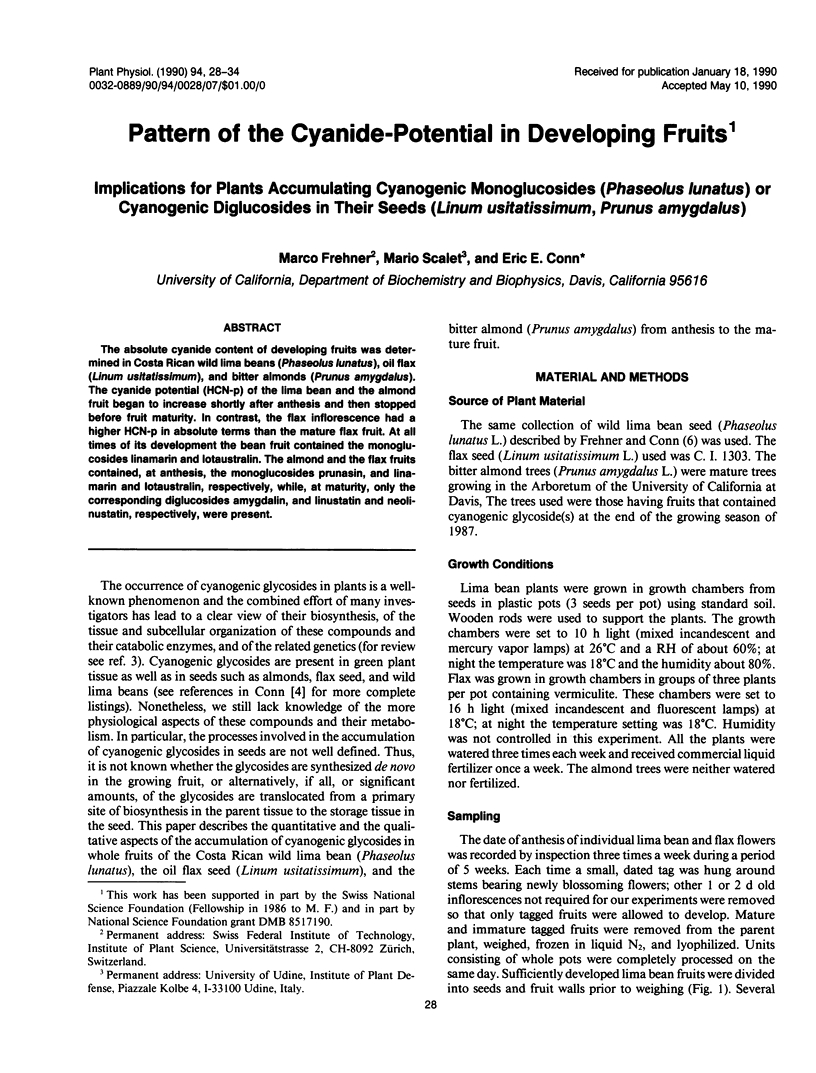
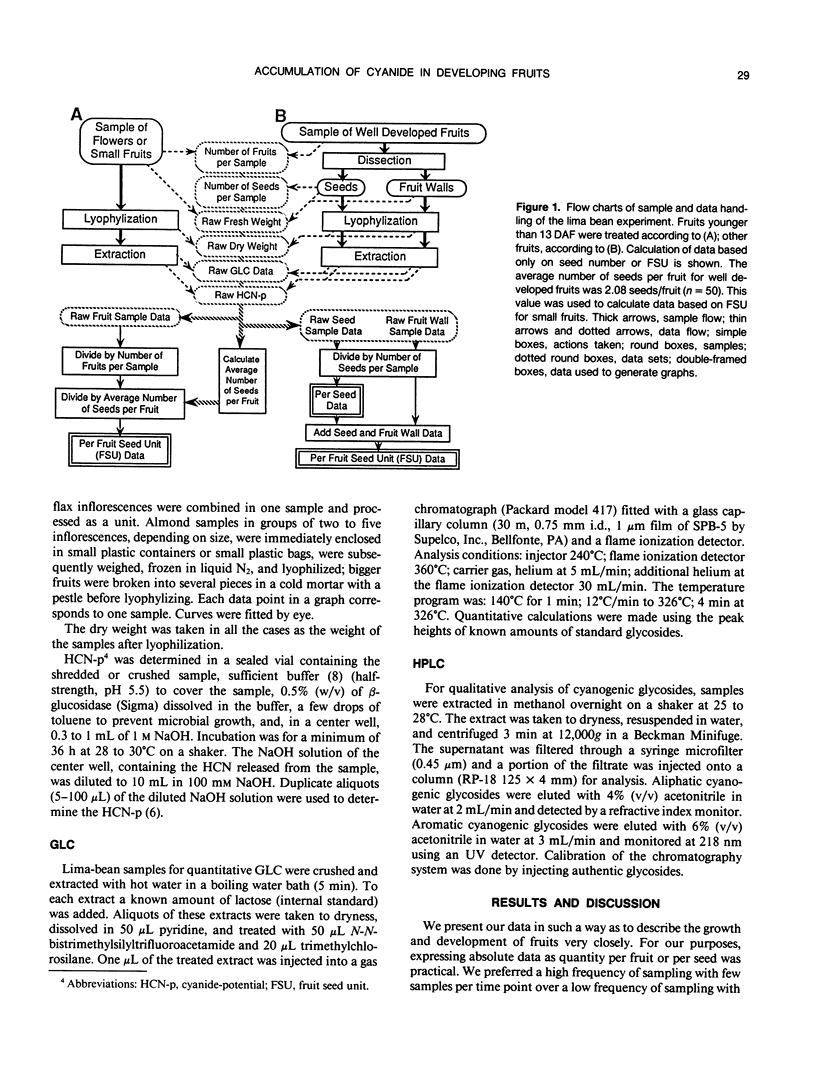
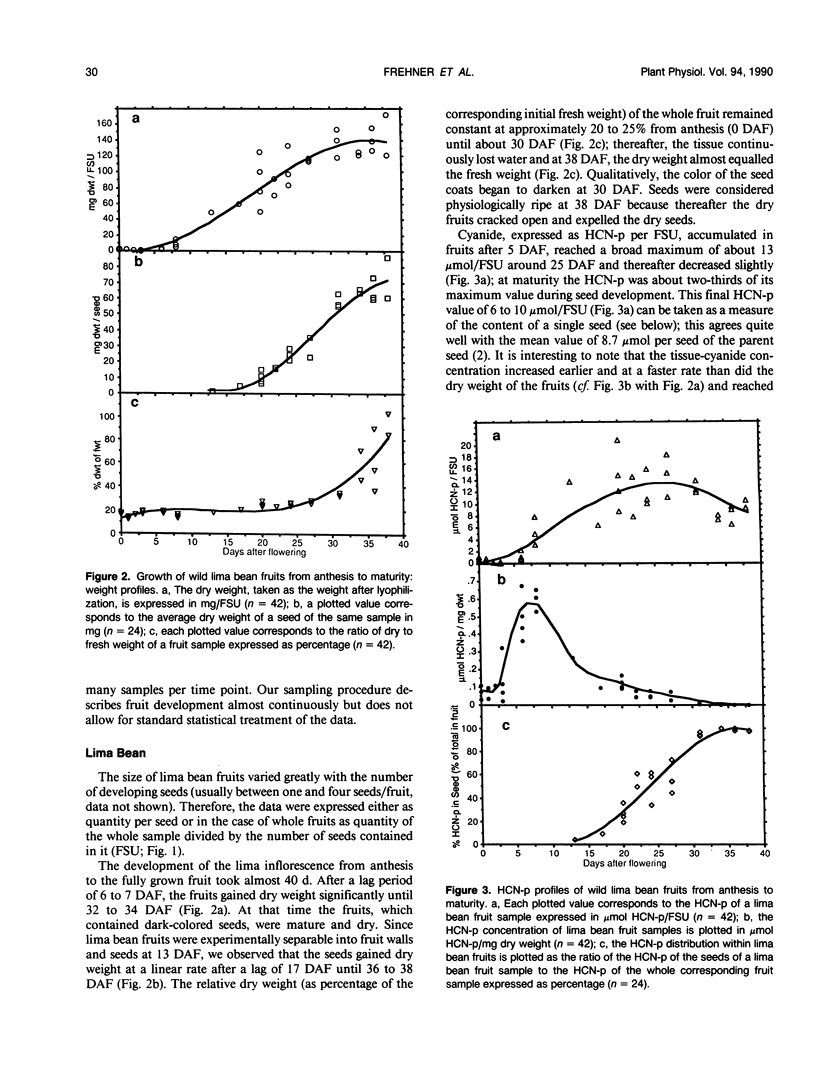
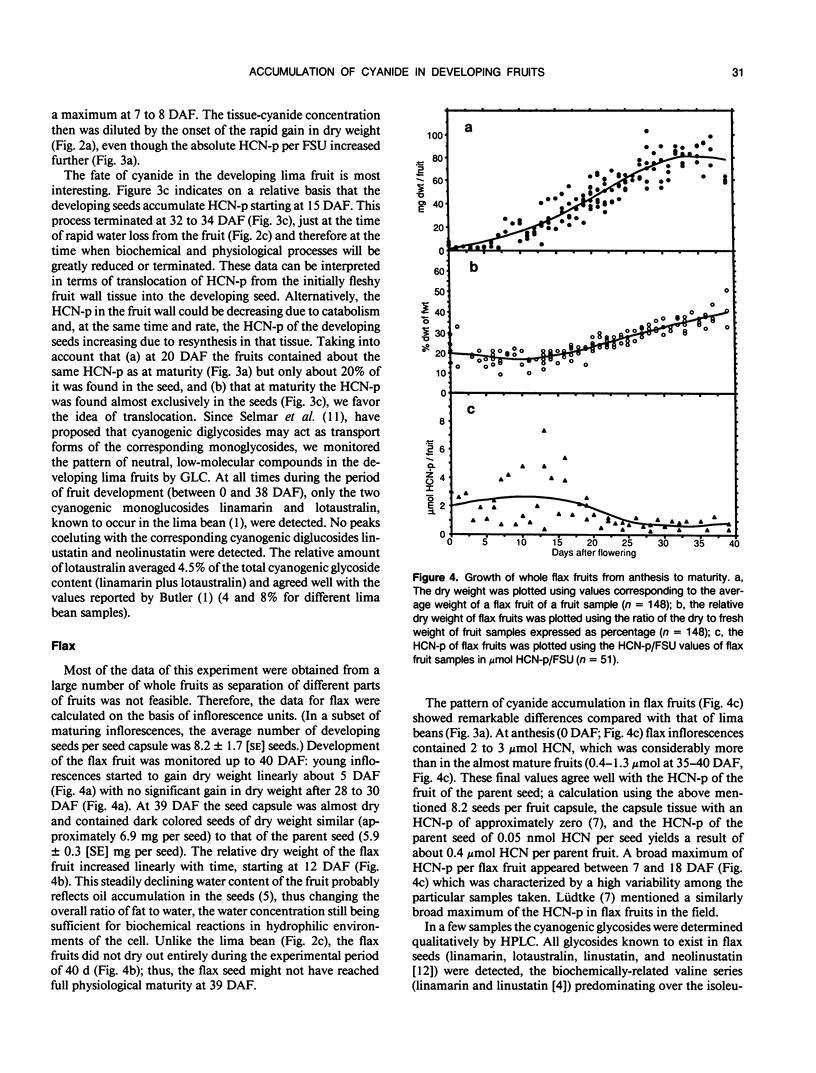
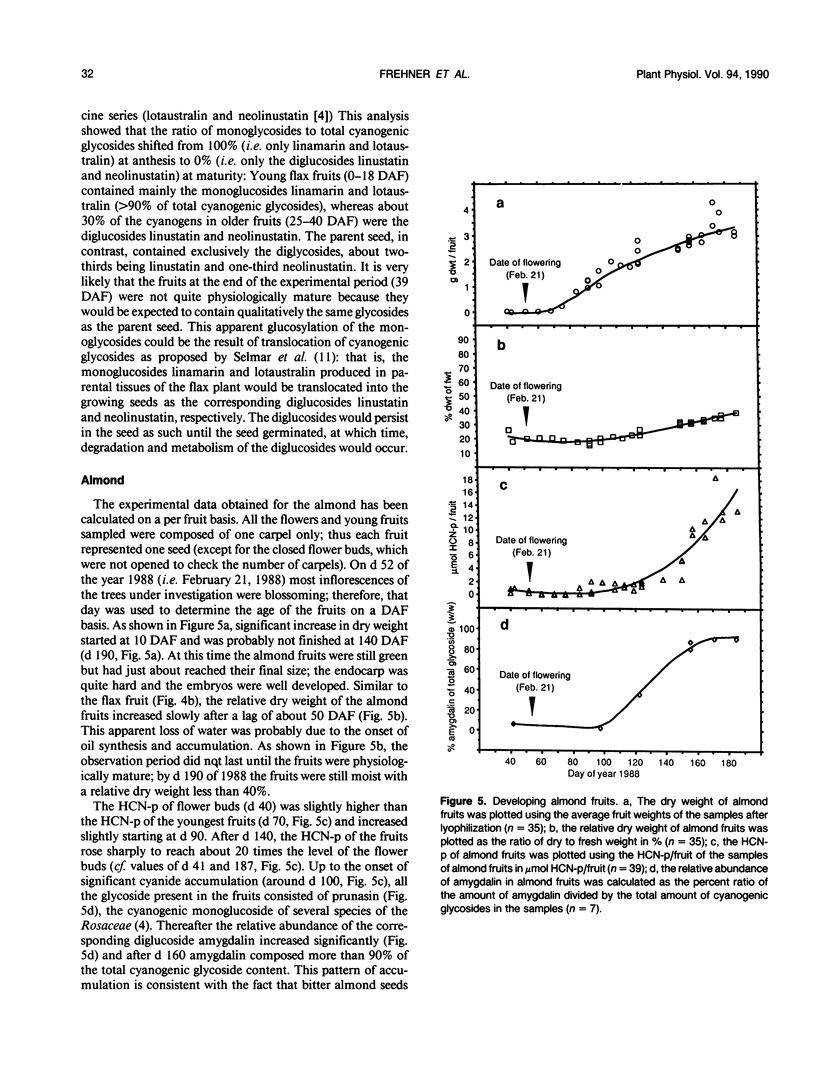
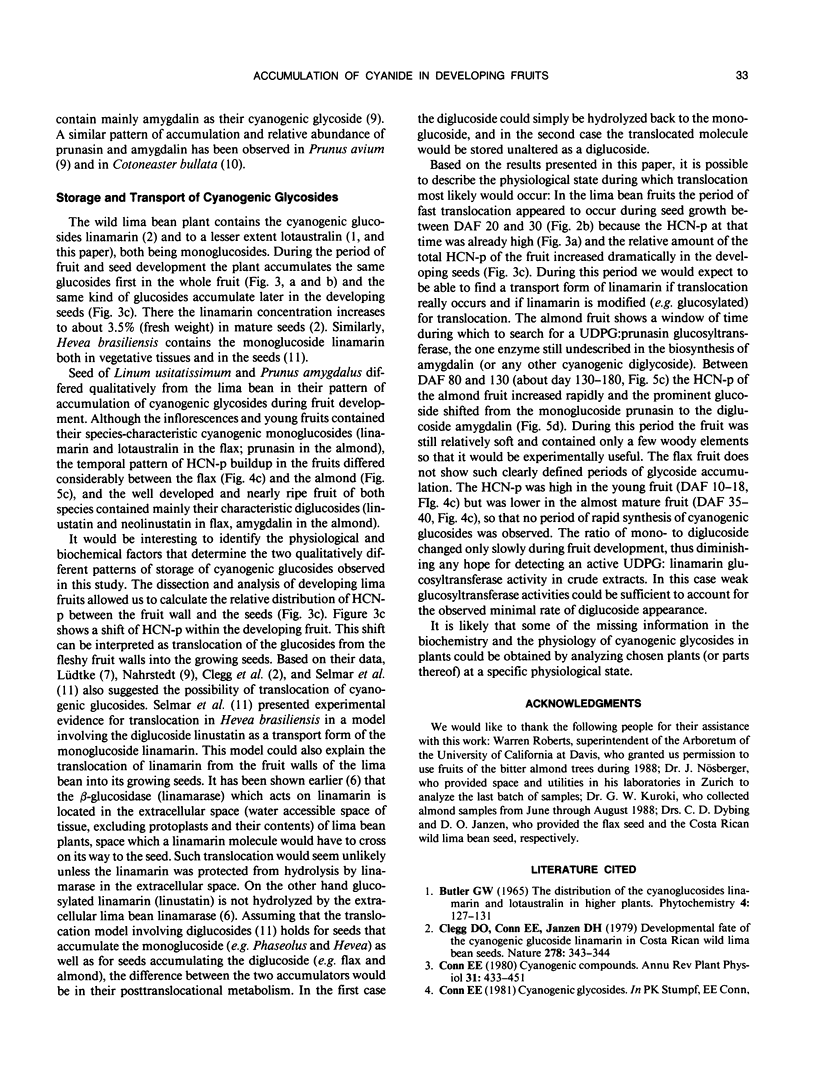
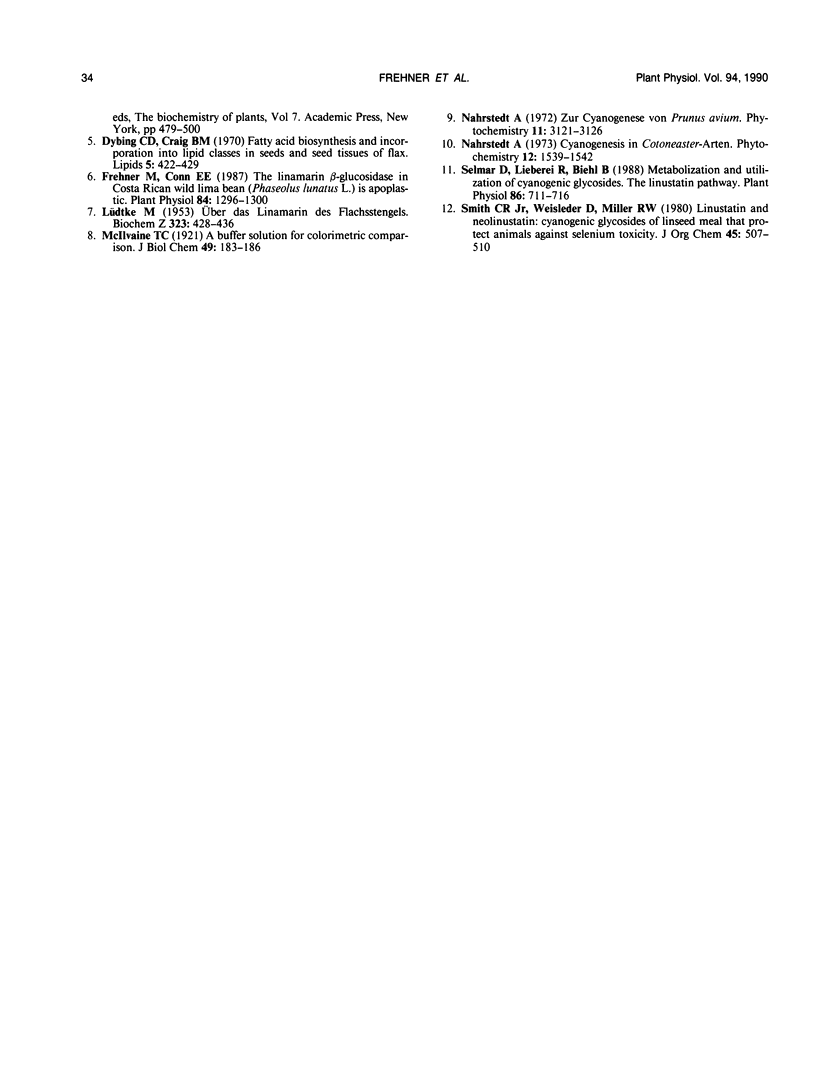
Selected References
These references are in PubMed. This may not be the complete list of references from this article.
- Frehner M., Conn E. E. The Linamarin beta-Glucosidase in Costa Rican Wild Lima Beans (Phaseolus lunatus L.) Is Apoplastic. Plant Physiol. 1987 Aug;84(4):1296–1300. doi: 10.1104/pp.84.4.1296. [DOI] [PMC free article] [PubMed] [Google Scholar]
- LUDTKE M. Uber das Linamarin des Flachsstengels. Biochem Z. 1953;323(6):428–436. [PubMed] [Google Scholar]
- Selmar D., Lieberei R., Biehl B. Mobilization and utilization of cyanogenic glycosides: the linustatin pathway. Plant Physiol. 1988 Mar;86(3):711–716. doi: 10.1104/pp.86.3.711. [DOI] [PMC free article] [PubMed] [Google Scholar]


